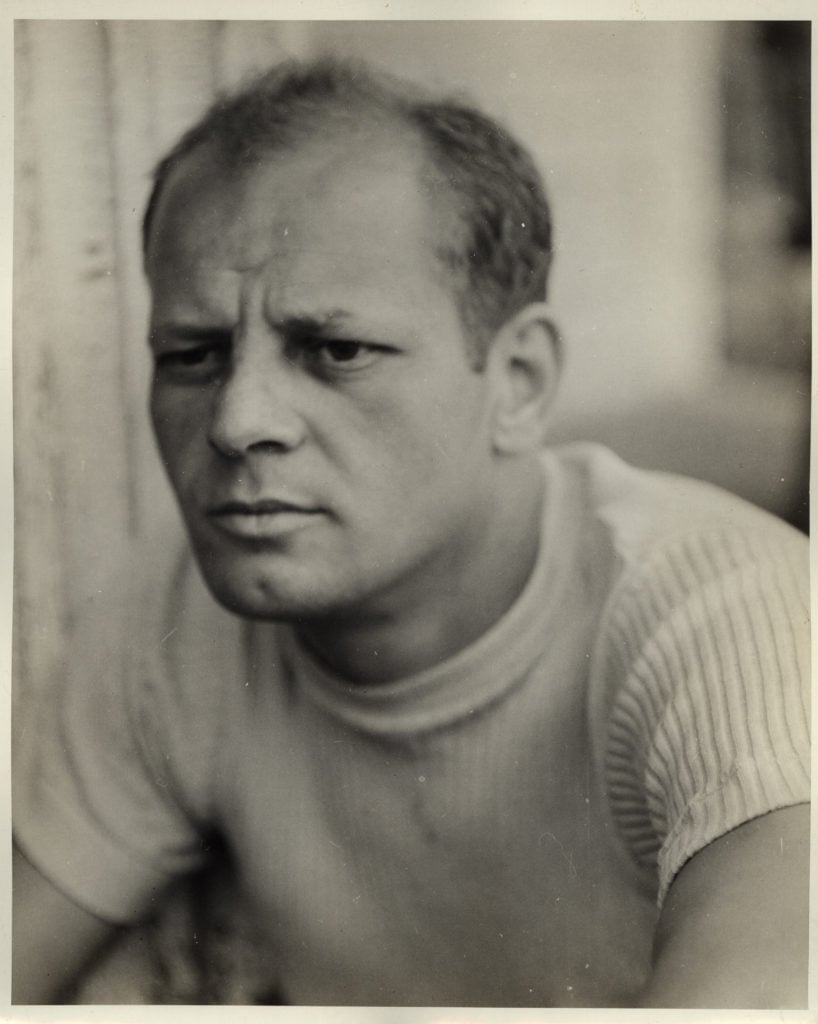Market
Jackson Pollock Is Perhaps the Most-Forged Postwar Artist. This Man Wants to Identify the Fakes
Richard Polsky hopes his niche service can fill a void in the market for Pollock's work.

Richard Polsky hopes his niche service can fill a void in the market for Pollock's work.

Eileen Kinsella

In 2007, hedge fund manager Pierre Lagrange bought a silver drip painting by Jackson Pollock for $17 million from Knoedler Gallery. Four years later, he found out the painting was a fake.
A few years after that, at least three different people were ensnared into buying works they believed were part of a previously unknown cache of Pollocks assembled by a mentally unstable and reclusive German immigrant named James Brennerman. That story also, perhaps unsurprisingly, turned out not to be true.
“As one of our great ‘art myths,’ Pollock fakes continue to crop up,” says the author and art dealer Richard Polsky. He “remains the most-forged postwar artist.” To help combat the issue, Polsky is now offering authentication services for Pollock’s work.
The Abstract Expressionist is the latest artist to join the portfolio of figures authenticated by Polsky, which already includes Andy Warhol, Jean-Michel Basquiat, and Keith Haring. Polsky launched his business after many artists’ foundations—including those of Warhol, Basquiat, and Haring—stopped offering authentication services in the wake of a rise of lawsuits from disgruntled collectors.

Jackson Pollock in North Truro, MA, 1944. Photo by Bernard Schardt. Courtesy American Contemporary Art Gallery, Munich.
The Jackson Pollock Foundation stopped authenticating his work much earlier, in 1995, after the artist’s catalogue raisonné was completed. Since then, the only recourse collectors have had to determine authenticity is to bring their work to the International Foundation for Art Research, which initially flagged some of the Knoedler and Brennerman “Pollocks.”
Polsky is aware that this is a complicated area. Other dubious works by Pollock to have surfaced over the past 20 years include a cache of 32 “long-lost pictures” that Alex Matter, the son of two friends of Jackson Pollock, found in a family storage locker in 2003 . Furthermore, Polsky notes, there are also paintings that even experts have trouble validating, such as Pollock’s alleged last canvas, Red, Black & SIlver, owned by his mistress Ruth Kligman.
And the void has only become wider since the recent passing of both collector Eugene Thaw in 2018 and scholar Francis O’Connor in 2017, the authors of the Pollock catalogue raisonné.
Polsky is offering collectors a two-step approach. First, he will provide an initial examination of paintings and works on paper to determine if there is a possibility the work may be genuine. (The cost for an opinion is $2,500, the same price he charges for works by Basquiat, Haring, and Warhol.)
Next, based on analysis of the imagery and provenance, if there is a “high probability of the work being authentic,” his service will refer the owner to Dr. Jennifer Mass, the well-respected president of Scientific Analysis of Fine Art, LLC, who will perform independent scientific examination.
Polsky says he has not spoken to the Pollock Foundation or any auction houses about his plan. But through this combination of connoisseurship and forensics, he hopes to provide clients with a vetting service that “will go a long way toward solving one of the art market’s most vexing authentication problems.”